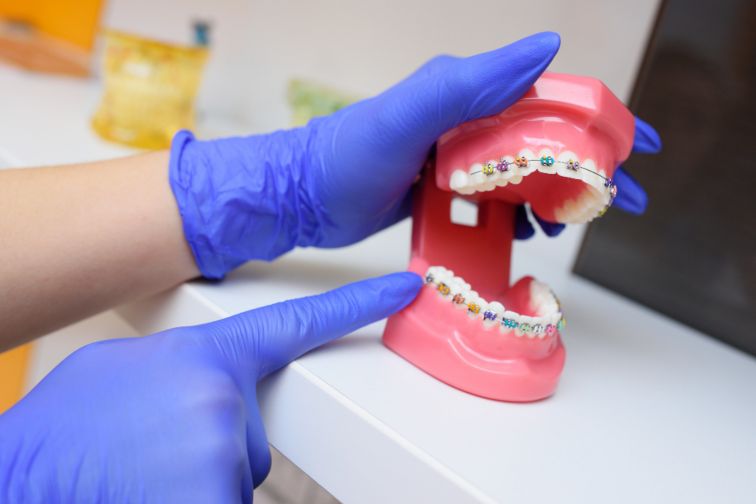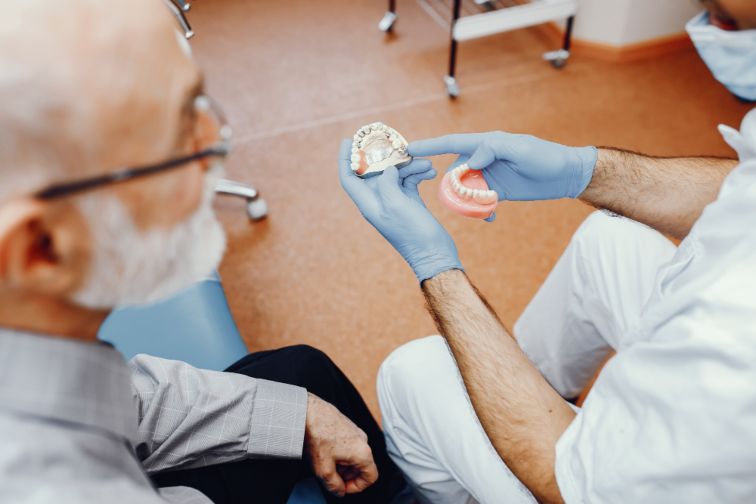Most dental patients tend to focus on the condition of their teeth – issues like cavities, decay, or sensitivity, rather than their position. However, the alignment of your teeth can play a big role in your overall oral health. So, can the position of your teeth actually cause problems? Yes, it can.
One of the most common alignment issues is overjet teeth – a condition where the upper front teeth extend outward and sit noticeably over the lower teeth.
While overjet can affect the appearance of your smile, the bigger concern is how it impacts daily activities like chewing, biting, and even speaking. In more severe cases, it can lead to jaw pain and difficulty closing the lips properly. Poor alignment may also increase the risk of accidentally biting the tongue or the inside of the cheek, and in rare situations, can even contribute to speech difficulties.
Like many dental conditions, overjets can range from mild to severe, but the good news is, there are effective treatments available. In this article, we’ll explain what overjet teeth are and outline 7 proven ways to fix them, helping you achieve a healthier smile.
How Much Overjet Is Normal?
Even though it may sound concerning, it’s completely normal for the upper front teeth to rest slightly in front of the lower ones when the mouth is closed. The typical space between them is around 2 millimetres.
However, if the upper front teeth extend more than 2mm beyond the lower teeth, this is considered an overjet – a condition that may require orthodontic attention.
What Causes Overjet Teeth?

It’s safe to say that there’s not only one thing that causes an overjet. There are plenty of different factors that can contribute to this specific dental condition.
In some cases, an overjet is a hereditary issue. Therefore, if one of the patient’s parents has it, the patient might have one, too. This condition can also occur if a person has an underdeveloped and weaker lower jawbone. This causes the upper teeth to protrude further than they should. This is one of the most common causes of overjet teeth.
However, genetics is just one of the causes. For example, an overjet can also occur if a person had a habit of sucking their thumb as a kid. Also, letting a baby use a pacifier for an extended period can contribute to this condition. So, parents, beware.
Overjet vs Overbite: What is the Main Difference?
A lot of people tend to get confused when it comes to the overjet teeth vs overbite question or they think that it’s the same thing. However, while similar, they’re different dental conditions.
Both of them share one characteristic and that’s the fact that the upper teeth are sitting over or in front of the bottom teeth. But when it comes to an overjet, the upper teeth protrude past the bottom teeth at a specific angle.
With an overbite, on the other hand, there is no angle. The upper teeth protrude past the bottom teeth, but they remain straight or downward. The overbite condition is also known as buck teeth.
Interestingly enough, both of these issues are related to sleep apnoea and snoring, but fortunately, they are easily fixed with simple orthodontics treatments.
Does Overjet Get Worse with Age?

In most cases, the overjet will get worse over time, if left untreated, of course.
It is crucial for a patient to correct their overjet in time if they want to have healthy and good-looking teeth. The best way to fix this dental issue is to tackle it early. Best results are reserved for those patients who begin their treatment at the age of 7.
However, this doesn’t mean that teenagers and adults can’t correct their overjets. It might take a little bit more work, but it’s doable.
How to Fix Overjet Teeth
The good news is that overjet teeth can be corrected and doing so can make a big difference, not just to your smile, but to your confidence as well. The key is finding the right treatment approach for your specific case.
Fortunately, there’s more than one effective way to fix overjet teeth, depending on the severity of the condition and your overall dental health.
Dental Braces
It’s safe to say that dental braces are a pretty common occurrence. Even people who haven’t worn dental braces have seen someone wear them. This device is known for fixing all kinds of teeth-related issues, like crooked teeth, for example. But, can braces fix overjet teeth? Yes, it can.
Most dental braces are designed to straighten and align the patient’s teeth by slowly and painlessly shifting them into a new location. There are many different types of braces a patient can use to remedy this condition, but traditional metal braces and removable clear aligners are the best options.
One of the first questions most patients ask is how long they’ll need to wear braces. There’s no single answer – the treatment duration depends on the severity of the overjet and the individual’s response to treatment. On average, patients typically wear braces for 18 to 24 months to correct overjet teeth.
Dental Bonding
The dental bonding procedure has a more aesthetic purpose. The dentist uses a composite resin to change the shape and size of a patient’s teeth. This makes overjet teeth less obvious.
The resin used in dental bonding is durable and mimics the strength of natural teeth, often lasting several years with proper care. This offers two major benefits – fewer visits to the dentist (always a plus) and a treatment option that’s gentle on your budget.
Invisalign
Dentists use Invisalign to treat minor malocclusions, usually in teenagers and adults. The dentist makes a series of clear plastic aligners from a mould of a patients teeth and puts them over the teeth to slowly and painlessly change their position. This device is similar to braces, but it’s more subtle.
Invisalign costs a bit more than traditional braces, but it saves the patient a few trips to the dentist.
Overjet Veneers

Some dentists tend to treat an overjet with veneers. This is a piece of porcelain that a dentist attaches to the front surface of a patient’s teeth. The porcelain is usually custom-made and it mimics the natural look of a patient’s teeth.
Veneers are good for hiding or masking misaligned teeth and other similar flaws. Porcelain veneers can last about 10 to 15 years and cost about $925 to $2,500 per tooth. This is a pricey procedure, but once it’s done, a patient doesn’t have to worry about their overjet teeth for a long time.
Crown
A dental cap or crown is a prosthetic that dentists use to cover the entire surface of a patient’s tooth. Just like the veneer, it is custom-made and it can make the overjet teeth appear straight. Dental crowns typically last between 5 and 15 years, depending on the material used and how well you care for your teeth.
Retainers
Retainers are very similar to braces. However, unlike braces, retainers are not glued or fixed to a patient’s teeth. A retainer is a piece of moulded plastic that has to be put on the roof of a patient’s mouth. Once a patient does this, a thin wire covers the front teeth and puts mild pressure on them.
Retainers are used for minor issues. Dentists recommend that patients wear retainers for about 2 to 3 months and usually only at night. One of the main advantages of a retainer is that the patient can remove it when they want to eat or brush their teeth.
Overjet Surgery
Surgery is generally considered a last resort for treating overjet teeth. In severe cases, where braces or retainers alone can’t correct the alignment, jaw surgery may be necessary to reposition the teeth and bite.
While this procedure can be complex and costly, the good news is that most overjet cases can be successfully treated without surgery through less invasive orthodontic options.
When to Start Treatment
It’s important to remember that overjet teeth are not a dangerous condition, though severe cases can sometimes cause discomfort or jaw pain. Still, from an aesthetic perspective, correcting overjet teeth can have a big impact on your confidence and overall smile appearance.
Straightening teeth is one of the most routine and rewarding treatments in modern dentistry, especially when started early, ideally before the age of 7. Most corrective procedures are quick, painless, and highly effective, giving patients every reason to take that first step toward a healthier, more confident smile.
If you’re concerned about overjet teeth or want to explore your treatment options, MGA Dental clinic is here to help. Our experienced dental teams provide personalised, modern orthodontic care tailored to your needs – from early intervention to advanced corrective procedures.
Book a consultation today at MGA Dental Gold Coast or Brisbane and take the first step toward the smile you deserve.